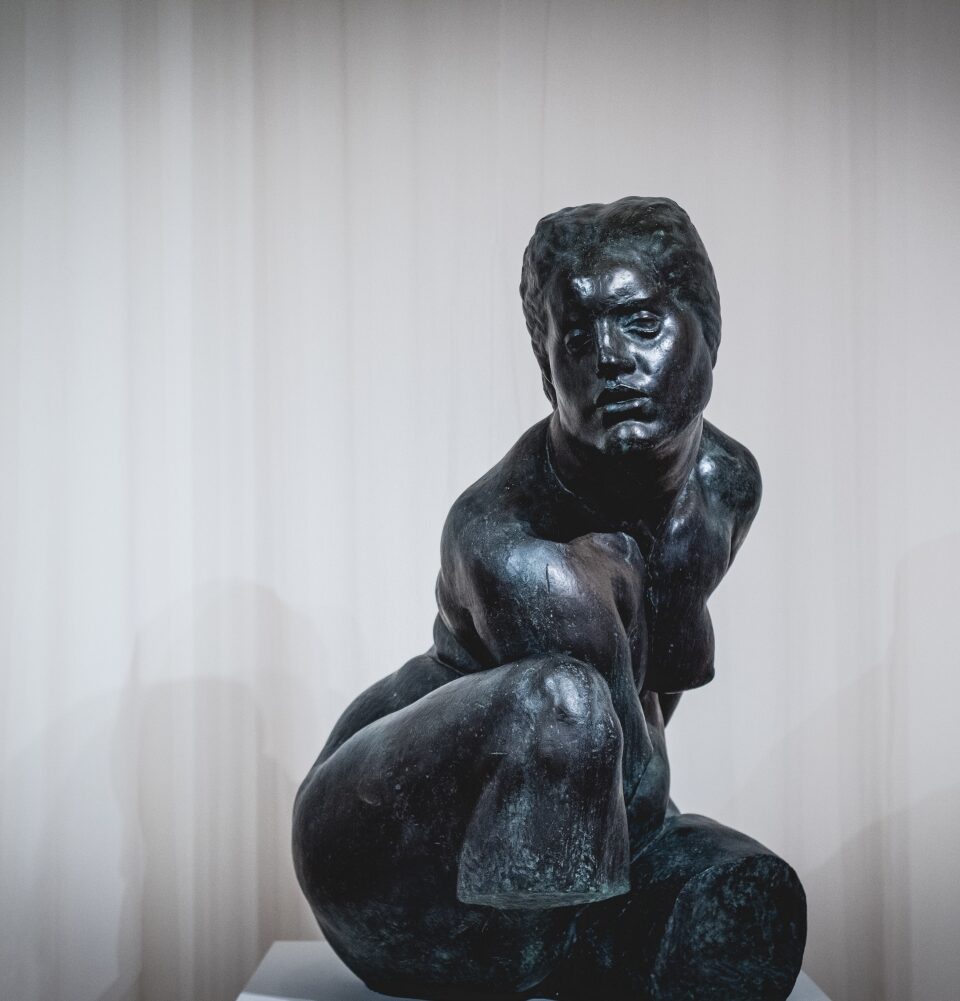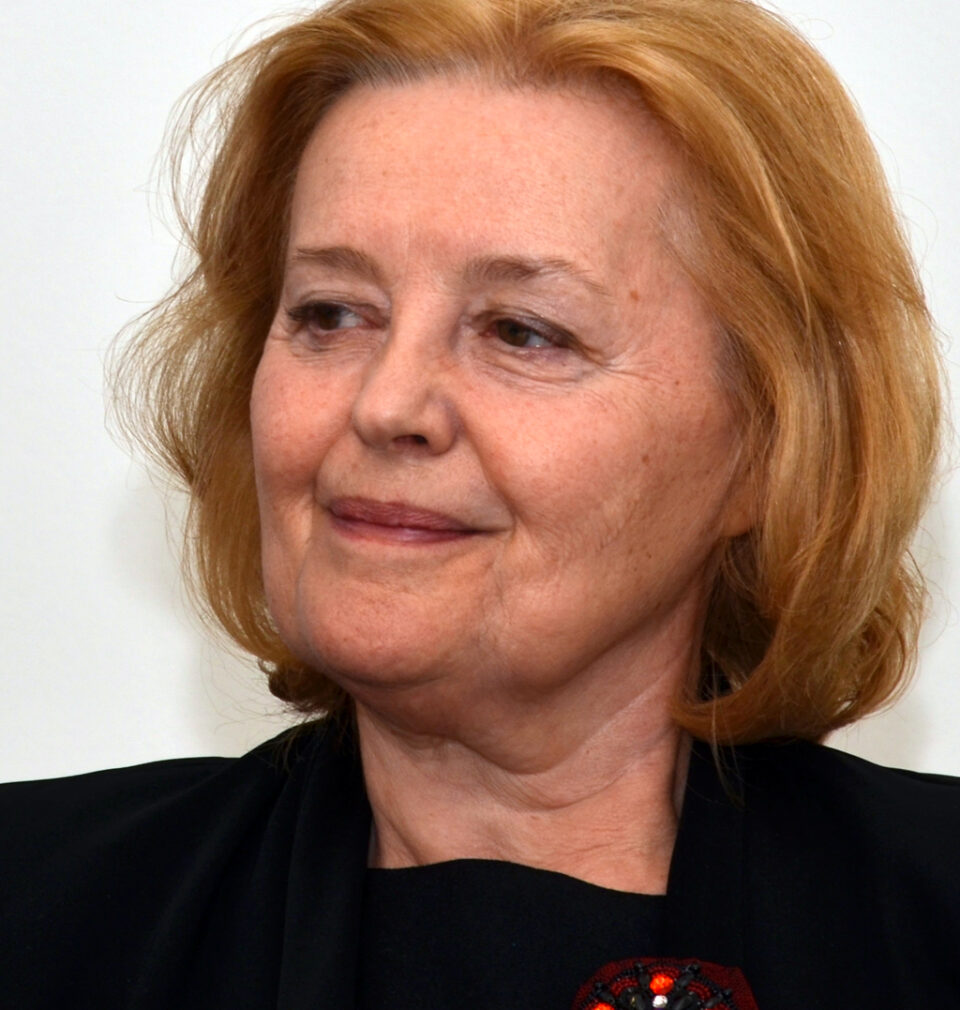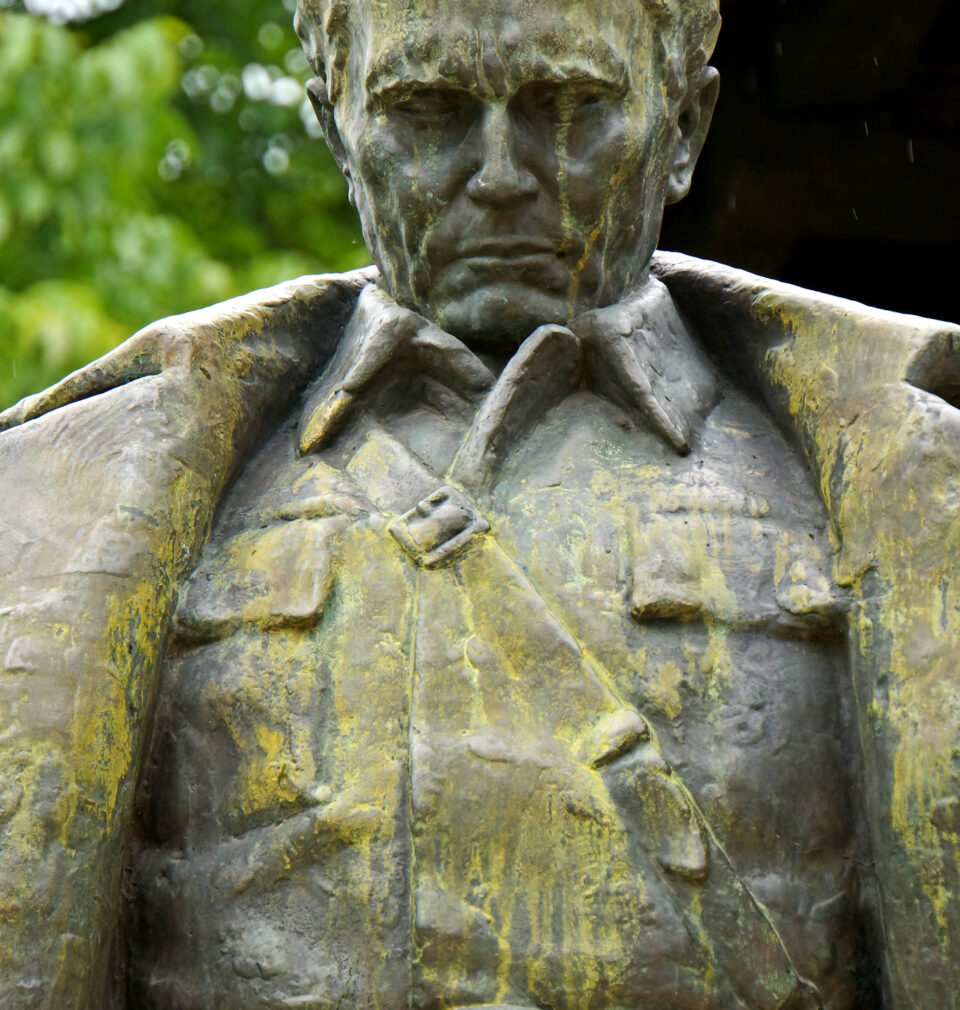
Stories From Countries Which Are no More
Double Take on Ivan Meštrović
Publication: 13 October 2021
TAGS FOR THE ARTICLE
TO THE LIST OF ARTICLESChiselling a Nation
Maciej Czerwiński
Yugoslavia has collapsed bloodily twice, with its first disintegration occurring in 1941 and the second one 50 years later. Today, when we try to take a realistic look at the multinational country of southern Slavs, we may form the hasty and inadequate impression that it was a relic of a multiethnic state society, or that it was created by some cynical politicians, thirsty for the blood of innocent victims. However, we couldn’t be more wrong: Yugoslavia, although intended as a modern state, was originated by romantic dreamers and idealists, convinced that their new country, as a common home, would be peacefully inhabited by Croats, Serbs and other southern Slavs.
One such romantic seer was the outstanding Croatian sculptor, Ivan Meštrović (1883-1962). Meštrović came from a rural family living in the Dalmatian interior, and died as an expatriate in the United States of America. The artist called himself and other like-minded people “Yugoslavian nationalists”. Today, after the ignominious defeat of “community” ideology, this expression sounds anachronistic because although the term, “nationalist”, implies Croatian and Serbian attributes, it definitely doesn’t imply “Yugoslavian” attributes. At the beginning of the 20th century, however, Croatian patriotism did not exclude the idea of Yugoslavia, although those beliefs were shattered by later events, particularly the pre-war period when Serbian domination resulted in Croatian separatism. They also didn’t deny that attitude in communist Yugoslavia.
Since the break-up of Marshal Tito’s country of “brotherhood and unity” and the eventual demise of the ideology of the southern Slavic community, Meštrović’s legacy has aroused controversy. Some Croats charge him with the responsibility of putting their country in “the prison of nations” (this expression refers to Yugoslavia). The Serbs, in turn, perceive him to be an advocate of anti-Serbian clerical nationalism. Both opinions are certainly unfair, but the desire to settle accounts with the past using simplistic methods, tends to be heartless, and callously demands indicating the culprit.
Nobody, however, not even his most vigorous opponents, can undermine the value of his artistic output. At present, perhaps even stronger than in their creator’s lifetime, his works exude humanism and profound spirituality. Meštrović’s oeuvre embodies the unique synthesis of various aesthetic codes in which western ones – classicist, impressionist and Art Nouveau – were enriched with the epic element of Balkan folklore. All of this was achieved by the artist’s fi ne chisel, which was sensitive to both nuance and subtlety. Benedetto Croce unjustly claimed that such a creative process was essentially barbarian. A similar view was expressed by Antun Gustav Matoš, an eminent figure of Croatian modernist literature, who compared Meštrović to the Polish sculptor, Bolesław Biegas. However, such artists as August Rodin and Antoine Bourdelle held Meštrović in high esteem and their appreciation of his sculptures contributed to his worldwide fame.
During the fi rst phase of his artistic activi-ty, Meštrović created socially engaged art which aimed at Yugoslavian unity. The stone which he carved, however, turned out to be more permanent than the concept of a multinational community which many dreamers, including Meštrović, attempted to patch together. He left the traces of his exceptional imagination all over the area of former Yugoslavia; scattered like isolated dots on a map, they resemble the ruins of past worldviews.
The artist executed busts of politicians and folk heroes (mainly Serbian ones, which is Matoš’s major accusation against the sculptor), and designed mausoleums and grand architectural complexes: the Monument to the Unknown Hero, glorifying the Serbian Karadjordjevic dynasty stands on Avala, a mountain overlooking Belgrade; the mausoleum of the great poet, Petar II Petrovic Njegoš, is located on top of Mount Lovćen in Montenegro; the statue of Bishop Gregory of Nin stands in Split; and a monument of the Catholic bishop, Josip Juraj Strossmayer, can be admired in Zagreb. All of the above-mentioned people epitomise three distinct national cultures: Serbian, Montenegrin and Croatian. Supporting the idea of one Yugoslavia expressed through his output, Meštrović strove to remove all national particularistic interests and make these cultures uniform.
The sculptor went even further and at one point even believed in the theory of the Dinaric race of “ Yugoslavian men”. And this is why he had a pure love for his homeland, Croatia, with his affection devoid of national egoism. He also cherished a strong liking for the Serbs, which is clearly shown in his memoirs written shortly before his death in the US, although he didn’t, however, approve of the Greater Serbian ideology.
The artist’s awakening from the Yugoslavian dream took place relatively late, much later than in the case of other Croats. It may have resulted from the fact that he grew up in a rural background in Dalmatian Zagora, a region in which the tradition of Serbian folk narratives was still kept alive, or from his long-standing friendship with King Alexander (in Meštrović’s memoirs the monarch is depicted as a righteous and good-natured man). He experienced disappointment with the concept of Yugoslavia towards the end of his life, although he had given up creating sculptures which disseminated this idea much earlier, during 1930s. This change was of great benefit to his art: his later works, more universal and raising wider issues of humanity and religion, appear more powerful than his entire pantheon of national heroes.
Despite Meštrović’s deep patriotism, he consistently opposed the idea of the Greater Croatia. His explicitly critical attitude to the Croatian fascist Ustaša movement (a Croatian fascist movement – editor’s note) cost him dearly during the Second World War as he spent many months in prison, and even narrowly escaped death. Many important people intervened on his behalf, including various Nazi generals, British and French diplomats, the Croatian archbishop, Aloysius Stepinac, Pope Pius XII, the King of Italy, Victor Emmanuel III, Benito Mussolini, and even, allegedly, Adolf Hitler. Everyone, except for the Croatian fascists, were admirers of his art.
Meštrović was also an implacable enemy of the Communist rule, not because it revived Yugoslavia, but because the authorities didn’t adhere to democratic principles (Marxist historiography charged the sculptor with belittling the role of the proletariat). Moreover, he was a devout Catholic. Nevertheless, during the final years of emigration in the US, Meštrović intended to return to Yugoslavia, and Marshal Josip Broz Tito, himself, encouraged him to do so, but he later abandoned his plans and died abroad, away from his homeland. Three years before his death, whilst visiting Yugoslavia, he held long and – as he claimed – sincere conversations with Tito in the marshal’s mansion on the island of Brioni. As we know from the ac-counts of Meštrović’s closest friends, Tito made a favourable impression on him. The sculptor appreciated his bold decision to break the alliance with Joseph Stalin in 1948, and always maintained the fact that the Croats had regained Dalmatia as an inheritance from Mussolini’s Italy was due to Tito. He objected, however, to Tito’s undemocratic and authoritarian rule, and openly protested against the imprisonment of Cardinal Aloysius Stepinac, a controversial leader of the Croatian Church during the Second World War, beatified by Pope John Paul II in 1998. Although some Jewish circles and almost all Serbs accused the cardinal of the collaboration with the Brownshirt Movement, Meštrović was convinced of the priest’s innocence and his testimony must have significantly contributed to Stepinac’s beatification.
The Croatian master was an upright man with an indomitable spirit, although he often acted on the spur of the moment. His austere sculptures reflect their creator’s authenticity and uncompromising quixotism. Fortunately, he did not live to see the Yugoslavian Civil War during the 1990s, although he would have probably perceived Croatian independence as a natural and happy ending of the turbulent historical process. He would have found it difficult, however, to accept the fact that the new state ideology didn’t show any understanding for his output and couldn’t forgive both him and the 19th century bishop, Josip Strossmayer, for their support of the idea of Yugoslavia. Luckily, this has also changed, as the last few years have brought about a heated debate on Meštrović’s political concepts. These notions remain important because, although the country vanished from the map, it still exists in the historical awareness of the Croats, and Meštrović himself embodies all the contradictions and ambiguities of Croatian culture.
Translated from Polish by Ewa Elżbieta Nowakowska
The centre of your own world
Łukasz Galusek
In an inspiring metaphor, Slovenian essayist, Simona Škrabec, defines our Europe as “a circle with a moving centre” – that is, not Central Europe, but a Europe of the centre. It is the centre of the circle in which we live and which, Škrabec writes, “lies in a different place for each one of us”[1]. A circle with a moving centre is also a symbol of looking for your own place, a challenge which faces so many Central European artists for whom the borders of their homeland have not been predefined. Stanisław Vincenz called it the need to possess “a closer homeland”, and significantly, such a homeland is not inherited but has to be built. Ivan Meštrović belongs to those artists who created such a place. They created their own territory which became a work of art in itself, an embodiment of the Romantic idea of “total work”, as well as a kind of Modernist Gesamtkunstwerk, splicing together time and space and inserting a particular lifestyle into this construct.
“A closer homeland” of Ivan Meštrović extended between the mountains and the sea of Dalmatia. The artist reinterpreted the genius loci of the Split Channel, a region located between the two wonderful cities of Split and Trogir, separated by a stretch of aristocratic estates next to the sea; the so-called Kaštele. The bay is protected from the open sea by three islands, Čiovo, Šolta and Brač. From the north, the coast is defended by mountains, where you constantly find modest ancient Croatian churches and the ruins of castles built by the Early Medieval Trpimirović – the first Croat state.
This is the homeland of Emperor Diocletian as well as the cradle of the Croat nation on which Meštrović founded his great vision, Slavia mediterranea, also accommodating within it the Renaissance heritage of the Adriatic municipalities and the folk culture of the Morlaks, the Dalmatian mountain people who guarded the Venetian-Turkish borderlands, from where the artist originated.
In this respect, the similarity of Meštrović’s villa in Split, built between 1929 to 1939, to the famous portico of the Diocletian Palace is probably not accidental. The artist was keen to emphasise the contemplative character of the maritime panorama towards which the portico faces, and it seems that the same idea was behind the structure of the imperial seat. Meštrović was also careful in his selection of building materials: he chose limestone and marble from Brač, the same as was used in the construction of the pal-ace. Did Meštrović consider himself a spiritual heir of Diocletian? We can only guess.
Less than one 100 metres from the villa stands a defensive Kaštelet, built in the 16th century by Split aristocrats from the Capogrosso family. Meštrović bought it in 1939, rebuilt it from ruins, and turned it into a charming retreat conducive to meditation. The most important building in the compound is the Holy Cross Church, which the artist erected al-most from scratch, giving it the shape of the modest Early Medieval Croatian churches scattered all over region. The church was intended to house Meštrović’s great cycle of reliefs which included scenes from the life of Christ, begun in 1917 and completed in 1950.
The artist held a continued dialogue with the heritage of the place, be it a Greek sculpture – such as the famous image of the god Kairos found in Trogir, on which he based the composition of many reliefs – or the antique tradition of the Caryatids with their timeless beauty, which he endowed with the features of Croatian peasant women. And he did not shrink from his own interpretations of history, like with the case of the controversial but very expressive monument of Bishop Grgur (Gregory). In 925 Grgur campaigned at the Split Synod for the Croatian diocese in Nin to be given the status of a metropolis. The failure of this endeavour and the moving of the metropolis to Split meant the young Croatian state lost its own ecclesiastical centre. In Meštrović’s vision, a very emotional bishop speaks to papal legates gathered in the cathedral. Placing the monument in the peristyle of Diocletian’s palace provoked a wave of protests, although it is hard to deny that the classic and stately architecture of this interior greatly enhanced the expressive force of the figure. Additionally, the heritage of the palace was supplemented with a Slavic element, without which the image of this part of the Mediterranean would be incomplete.
Between 1926 to 1931, the third important structure constituting the Dalmatian microcosm of the artist was built – the family mausoleum in Otavice, where the mortal remains of Meštrović himself also rest. Both the architecture and the sculptural arrangement are the work of Meštrović, who comes across as continuing the tradition of the great Dalmatian masters, architect-sculptors such as Nicholas the Florentine and George the Dalmatian. Their works in Šibenik, Trogir and Split are regarded as part of world heritage today; as is the work of Ivan Meštrović, which draws on the experiences of various cultural tendencies arriving on the Dalmatian coast, making it so universal.
Jerzy Stempowski, Polish essayist, valued Meštrović’s work very highly. He did not shrink from calling him “the greatest genius of monumental sculpture from antiquity”[2]. He never actually wrote a book of essays on Meštrović, although he often declared such intentions in his letters. Stempowski noted his impressions and thoughts both in his letters and essays, which he probably planned to elaborate on in the book. These motifs scattered in his writings suggest a very persuasive reading of Meštrović’s work. It is difficult to resist the impression that Stempowski penetrated the essence of Ivan Meštrović’s artistic vision in these notes.
For in contrast to Benedetto Croce, who disapproves of the “barbarity” of the sculptor, Stempowski recognised a link in the chain of continuity in this trait. “Since I have become familiar with Alpine dialects, I am certain that there is nothing primitive about folk language,” he wrote in a letter to Józef Czapski. “Even the tongue of the shepherd contains more of the oldest and proudest traditions than any of the so-called literary languages. In Meštrović’s Dalmatian peasant, the tragic heritage of Greece, Rome, Byzantium and the Renaissance is incomparably closer and more important than in Bourdelle or Maillol, who are very remote from it all.”[3] Elsewhere the essayist noted: “Western sculpture stems from the Greece found in museums; hence its acquired restraint, its scholarly caution. Meštrović was confronted with a different version of the antique world. You can see Byzantine memories in his religious sculpture and portraits of his mother. Even his lack of restraint has antique precedents. Standing by the monument of Gregory of Nin and looking at his heel, as large as a horse’s rump, I recall Memnon, the Colossus of Rhodes, and the huge statues by Phidias, mentioned by the Greek memoir writers.”[4]
Ivan Meštrović belongs to the group of Central European artists whose work acquired fame and recognition around the world. His feeling of being at home in the world as well as in the universe of art, was probably made possible by the fact that he remained spiritually connected to his Dalmatian “closer homeland”, which inspired him and where he felt his roots to be. As Stempowski put it: “Hours of leisure spent in the Diocletian Palace listening to the vague breath of the ages must have left indelible memories in him.”[5]
Translated from Polish by Tomasz Bieroń
***
[1] Simona Škrabec, Krąg z ruchomym środkiem, in: Kraków i Lublana a mit Europy Środkowej, transl. Joanna Pomorska, MCK, Kraków 2007, p. 11.
[2] A letter to his father, Stanisław Stempowski, sent from Muri on November 27th 1945. Jerzy Stempowski, Listy, edited by Barbara Toruńczyk, Zeszyty Literackie, Warszawa 2000, p. 135.
[3] A letter to Józef Czapski sent from Muri on October 24th 1947. Jerzy Stempowski, Listy, op. cit., pp. 46–47.
[4] Jerzy Stempowski, Od Berdyczowa do Lafitów, Czarne, Wołowiec 2001, p. 483.
[5] Ibidem.
Copyright © Herito 2020




